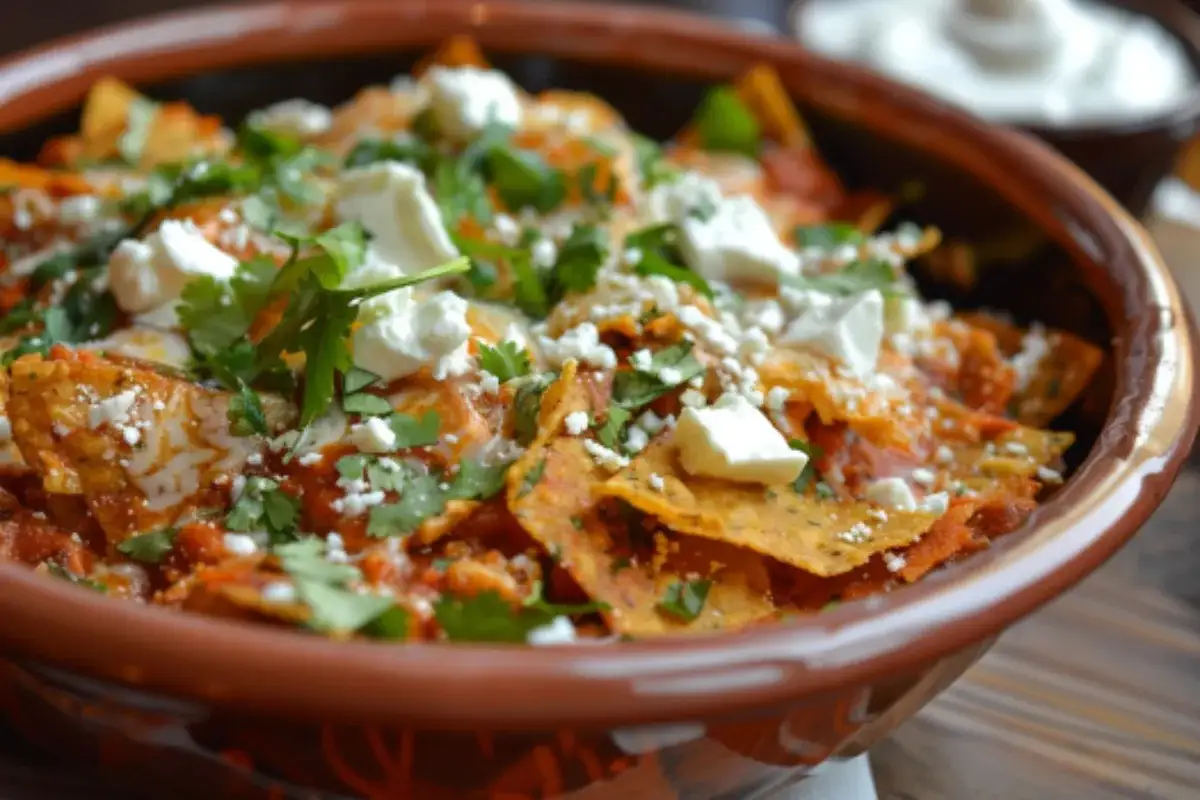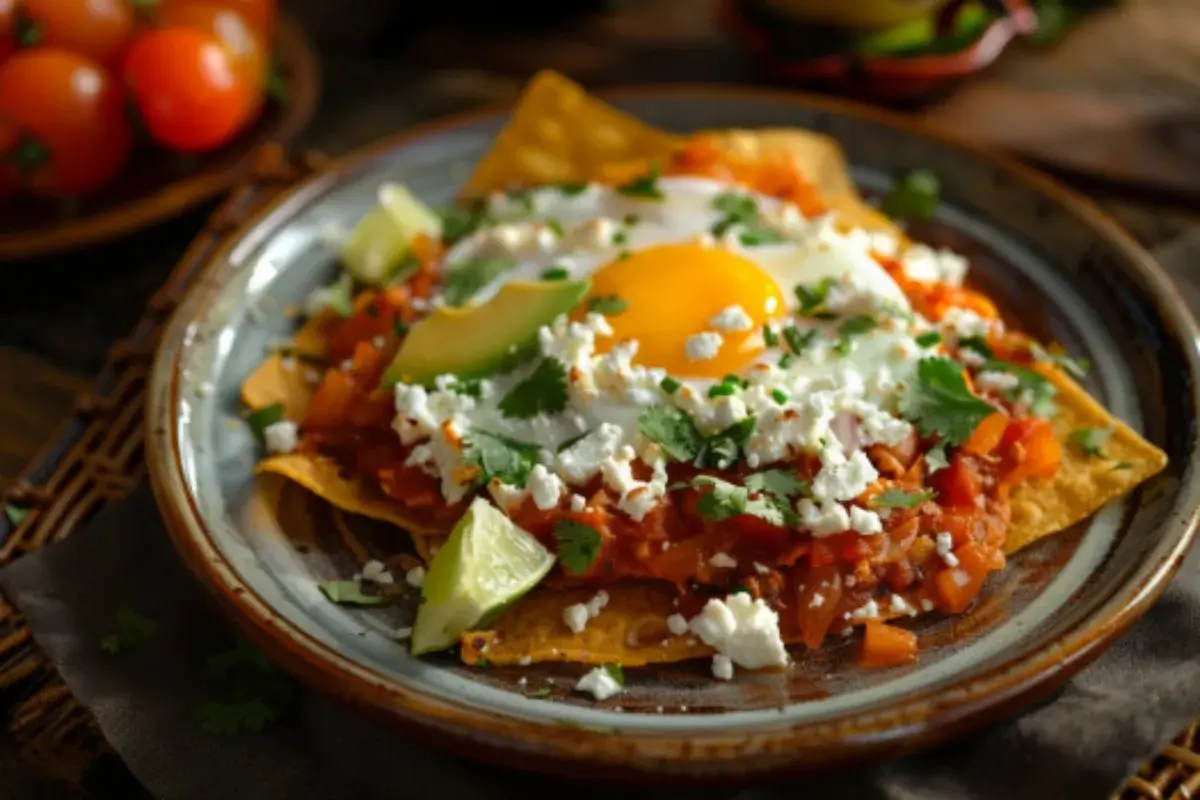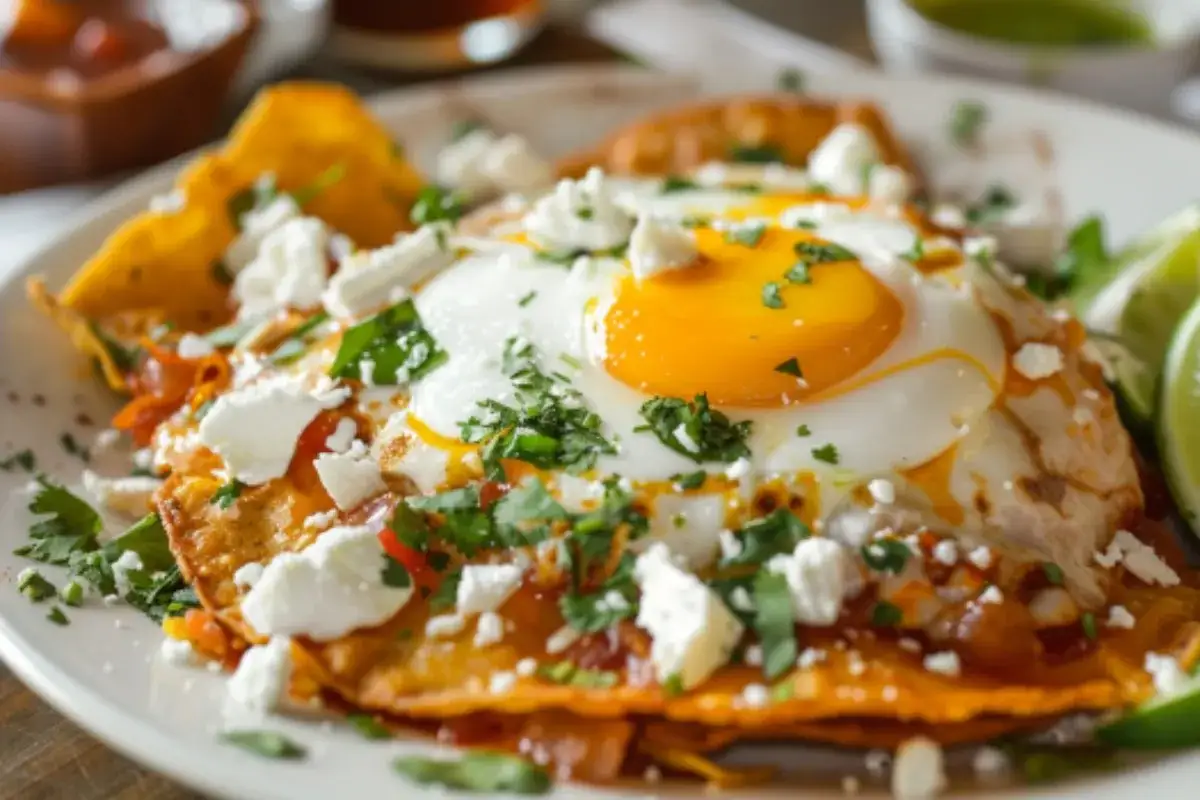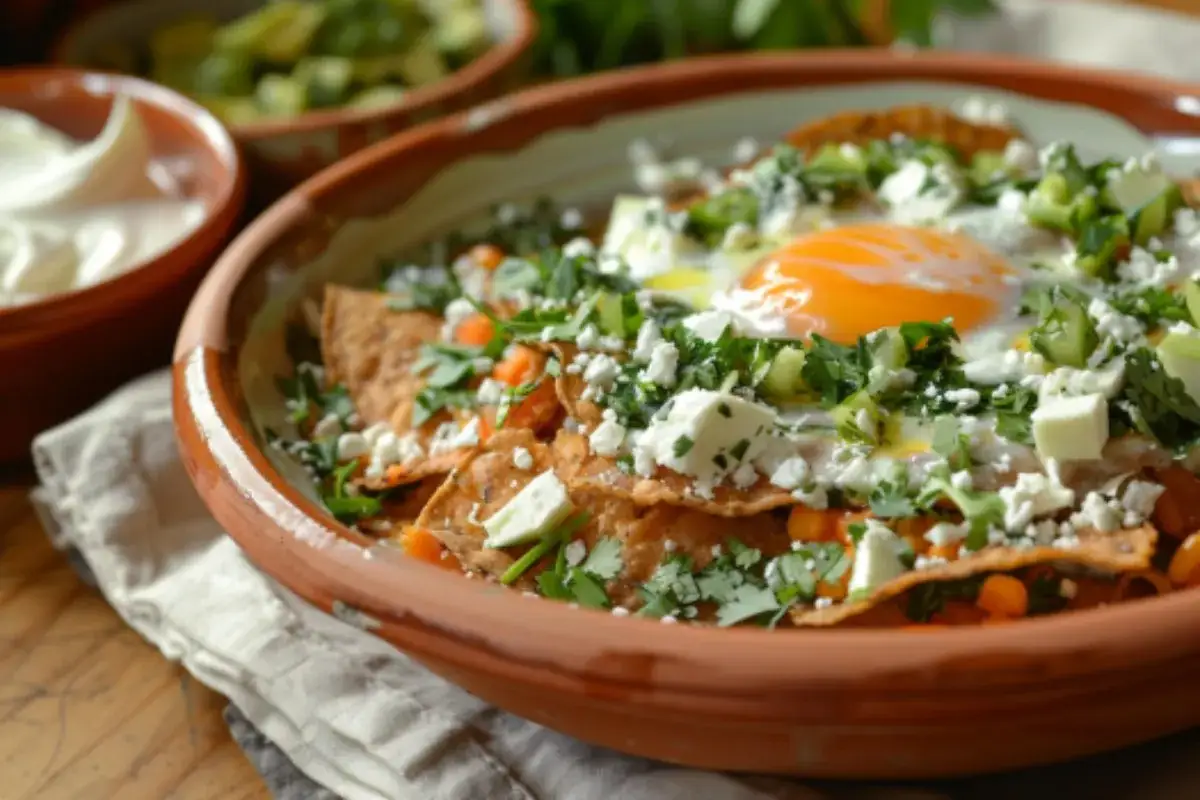Chilaquiles, a beloved and humble dish in Mexico’s culinary tradition, is much more than a simple plate of food. Celebrating chilaquiles reflects Mexico’s history, the evolution of its cuisine, and the rich fusion of cultures that define it. Today, people recognize chilaquiles not only in Mexico but around the world as a versatile and flavorful dish that exemplifies the heart of Mexican food. Made with basic ingredients like tortillas, salsa, and cheese, it has become a staple in Mexican households and has recently gained popularity on international brunch menus.
However, celebrating chilaquiles goes far deeper than taste and simplicity. The dish represents the creativity of Mexican cooks, blending ancient and colonial culinary traditions. It has the ability to evolve while retaining its cultural significance. In this article, we’ll explore what celebrating chilaquiles truly means, delving into its rich history, cultural impact, and how it has adapted through time.
What Makes Chilaquiles Special?

At first glance, chilaquiles seems like a straightforward dish. Its basic components include fried or baked tortillas, salsa (either salsa roja or salsa verde), and toppings like queso fresco and Mexican cream. People often serve chilaquiles with fried eggs, shredded chicken, or beans, making it a dish enjoyed at breakfast, brunch, or even as a light lunch. However, its simplicity is deceptive because chilaquiles carry with them layers of history and meaning.
The tortillas used in chilaquiles hold deep cultural significance in Mexican cuisine. Corn has been a staple crop in Mesoamerica for thousands of years, and tortillas have played a foundational role in the diets of ancient civilizations like the Aztecs and Mayans. The process of making tortillas has largely remained unchanged for centuries. When these tortillas begin to go stale, Mexicans find ways to make them delicious again by frying or baking them and adding salsa, transforming leftovers into a comforting meal.
Chilaquiles also reflect the importance of chiles in Mexican cuisine. Chefs use chiles not just for heat but also for the complex flavors they contribute to sauces like those used in chilaquiles. Whether using the tangy, bright flavors of salsa verde made from tomatillos or the rich, earthy tones of salsa roja made from tomatoes and dried chiles, the choice of salsa can dramatically alter the character of the dish.
Beyond the ingredients, chilaquiles represent Mexican ingenuity in the kitchen. By taking something as simple as leftover tortillas and elevating it into a flavorful, satisfying, and nourishing meal, they showcase the resourcefulness of Mexican cooking.
The Meaning Behind Celebrating Chilaquiles
To fully grasp the meaning behind celebrating chilaquiles, it’s important to understand the cultural importance of food in Mexico. Food is not just sustenance; it is a connection to the past, to family, and to community. Families keep many Mexican traditions alive through food, passing them down through generations. Chilaquiles are no exception.
In May 2024, chilaquiles gained global recognition when it was celebrated in a Google Doodle. This moment was significant not just for chilaquiles, but for Mexican cuisine as a whole. People have honored the dish as an important part of Mexico’s cultural heritage, symbolizing both tradition and adaptation.
Celebrating chilaquiles is about recognizing its role in Mexican households. It’s a dish that brings people together, whether around the breakfast table or at a family gathering. For many, people associate it with comfort, memories of home, and the warmth of family traditions. As a flexible dish, cooks can adapt it to fit the ingredients at hand, which makes it accessible to all. It embodies the spirit of making the most of what you have and transforming simple ingredients into something truly special.
The Origins of Chilaquiles
The history of chilaquiles goes back centuries, long before the arrival of Spanish colonizers. In fact, it is rooted in the indigenous culinary traditions of Mesoamerica. The Aztecs, who inhabited the region that is now central Mexico, were the first to cultivate corn, which became the backbone of their diet. People made tortillas from ground corn through the process of nixtamalization, consuming them daily as a key part of Aztec meals.
But what happens when tortillas go stale? The Aztecs, like many cultures that rely on staple ingredients, found a way to extend their life by frying or toasting them. While the exact origins of chilaquiles as we know it today are unclear, it is likely that the dish was born out of this necessity to use up stale tortillas. By adding sauces made from tomatillos, chiles, and other ingredients, the Aztecs created a meal that was flavorful and practical.
When the Spanish arrived in the 16th century, they brought with them new ingredients like dairy products, which led to the addition of cheese and cream to chilaquiles. The result was a dish that reflected the blending of indigenous Mexican and European culinary traditions—a process known as mestizaje, which is a defining characteristic of modern Mexican cuisine.
Regional Variations of Chilaquiles

Like many traditional Mexican dishes, chilaquiles takes on different forms depending on the region. Each part of Mexico brings its own local flavors and ingredients to the dish, creating unique regional variations that reflect the diversity of Mexican cuisine.
Chilaquiles in Mexico City
In Mexico City, chilaquiles are a staple of the breakfast menu. Cooks typically fry the tortillas until crispy and then simmer them briefly in either salsa roja or salsa verde. They add the salsa just before serving to ensure the tortillas retain some of their crunch. In the capital, restaurants often serve chilaquiles with a side of refried beans and top them with a fried egg. The city also offers a wide variety of toppings, from shredded chicken to avocado, reflecting its status as a culinary melting pot.
Chilaquiles in Oaxaca
Oaxaca, known as the “Land of the Seven Moles,” is famous for its complex sauces, and chilaquiles in Oaxaca often reflect this. In Oaxaca, cooks might make chilaquiles rojos with a rich, smoky red sauce that includes pasilla or guajillo chiles, giving the dish a deeper, more robust flavor. In some cases, chefs drizzle mole negro on top of the dish, adding an additional layer of complexity. Toppings in Oaxaca often include queso fresco and fresh herbs, adding a bright contrast to the rich sauce.
Chilaquiles in Jalisco
In Jalisco, cooks typically make chilaquiles with a red salsa and serve them with a hearty protein like shredded beef or pork. They usually fry the tortillas until they are quite crispy before smothering them in a spicy red salsa made from dried chiles de árbol or guajillo chiles. Toppings in this region might include cotija cheese and pickled onions, giving the dish a bold and tangy flavor profile.
Chilaquiles in Veracruz
Veracruz, with its coastal influence, is known for its chilaquiles verdes, which chefs make with a tangy green salsa made from tomatillos. The bright, acidic flavor of the tomatillos pairs perfectly with the crispy tortillas. In some coastal areas, seafood is added to the dish, with shrimp being a common topping. This version of chilaquiles is lighter and fresher than its counterparts in other regions, reflecting the influence of the sea on Veracruz’s cuisine.
Chilaquiles in the Yucatán Peninsula
In the Yucatán, chilaquiles often come with a unique twist. People know the region for its use of habanero chiles, which add a fiery kick to the salsa. Additionally, cooks often serve chilaquiles in the Yucatán with cochinita pibil, a slow-roasted pork dish marinated in achiote and citrus. This regional variation showcases the influence of Mayan cuisine and the use of bold, vibrant flavors that are characteristic of the Yucatán Peninsula.
These regional differences are part of what makes chilaquiles such a versatile and beloved dish. Each version reflects the local ingredients and culinary traditions of the area, while still staying true to the basic concept of tortillas, salsa, and cheese.
Modern Adaptations of Chilaquiles
In recent years, chilaquiles have seen a resurgence in popularity, not just in Mexico but around the world. As Mexican cuisine has gained recognition globally, so too has the humble dish of chilaquiles. Today, chefs both in Mexico and abroad are taking chilaquiles to new heights, adding modern twists and experimenting with new ingredients while maintaining the soul of the dish.
In trendy brunch spots, particularly in the United States, chilaquiles have become a go-to dish for brunch menus. Here, cooks might top chilaquiles with poached eggs, slices of avocado, and a sprinkle of microgreens for a more refined presentation. Some restaurants enhance their chilaquiles with gourmet toppings like short rib, pork belly, or even pulled pork, transforming the dish into a hearty and indulgent meal.
Fusion cuisine has also embraced chilaquiles in creative ways. In California, for instance, some chefs have developed ‘nacho-style’ chilaquiles, where they keep the tortillas crispy and layer them with cheese, salsa, and various toppings much like a plate of nachos. Other versions feature unusual ingredients like chorizo, tofu, or even BBQ sauce, blending Mexican flavors with other culinary traditions.
At its core, however, chilaquiles remains the same. The combination of fried tortillas and salsa is still the heart of the dish, and while chefs might experiment with toppings and techniques, the essence of the dish remains intact.
Chilaquiles in Mexican Celebrations

Chilaquiles are also an important part of Mexican celebrations and holidays. While people often associate the dish with everyday meals, it also plays a significant role in more festive occasions. One of the most prominent times to serve chilaquiles is during Día de los Muertos (Day of the Dead), a holiday that honors the spirits of deceased loved ones. In some households, families prepare chilaquiles as part of the offerings made to the spirits. The dish serves as a symbol of the continuity between life and death, connecting families through shared traditions.
Chilaquiles are also a popular breakfast dish during the Christmas season. After a night of festivities, many Mexican families enjoy chilaquiles as a comforting and filling breakfast. Its ability to be made in large quantities makes chilaquiles ideal for feeding a crowd, and people often serve it alongside tamales and other traditional holiday foods.
In these celebrations, chilaquiles take on a deeper meaning. They represent the bonds of family and tradition, and the act of preparing and sharing chilaquiles is a way of passing down these traditions from one generation to the next.
Frequently Asked Questions about Chilaquiles
1. What are chilaquiles made of?
Chilaquiles are made from corn tortillas. These are fried or baked and then simmered in salsa. The salsa can be salsa roja (red) or salsa verde (green). Common toppings include queso fresco, Mexican cream, onions, and sometimes chicken or eggs.
2. What is the difference between chilaquiles rojos and chilaquiles verdes?
The main difference lies in the type of salsa used. Chefs make chilaquiles rojos with salsa roja, which is based on tomatoes and red chiles. For chilaquiles verdes, cooks use salsa verde, made from tomatillos and green chiles.
3. Are chilaquiles the same as nachos?
No, they are different. Nachos are crispy tortilla chips with cheese and toppings. Chilaquiles are tortillas softened in salsa and served as a meal.
4. Can chilaquiles be eaten for breakfast, lunch, or dinner?
Yes! While they are popular as a breakfast dish, chilaquiles can also be served for lunch or dinner.
5. What are some common toppings for chilaquiles?
Common toppings for chilaquiles include queso fresco or cotija cheese, Mexican cream, chopped onions, cilantro, avocado slices, and fried eggs. Shredded chicken or beef is also popular, and beans are sometimes served on the side.
Conclusion: Why Chilaquiles Are Worth Celebrating
In conclusion, chilaquiles is more than just a delicious meal. It embodies Mexican heritage and has evolved over centuries while still holding its connection to the past. Chilaquiles has humble origins in indigenous kitchens, yet it has evolved into modern interpretations found in restaurants around the world. This beloved dish reflects the ingenuity and creativity of Mexican cuisine.
Celebrating chilaquiles means celebrating the history, traditions, and resilience of the Mexican people. This dish tells the story of Mexico’s past while continuing to evolve and adapt to new ingredients and tastes. Whether you’re enjoying a traditional plate of chilaquiles rojos in a small Mexican town or trying a modern fusion version in a trendy urban café, you are partaking in a tradition that extends far beyond food.
By celebrating chilaquiles, we honor the culture and history that have made it the enduring dish it is today.

